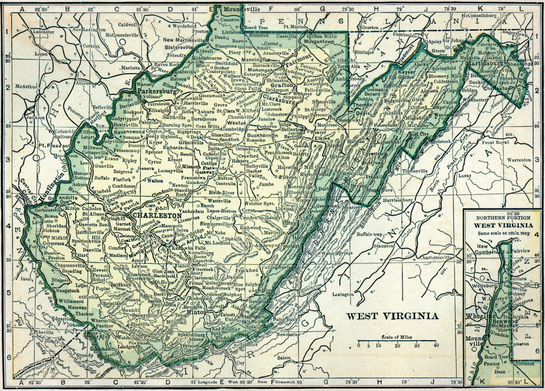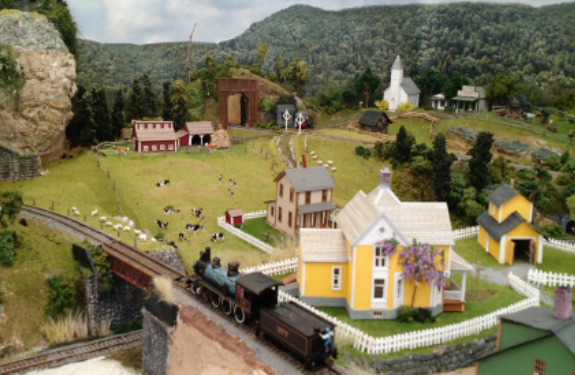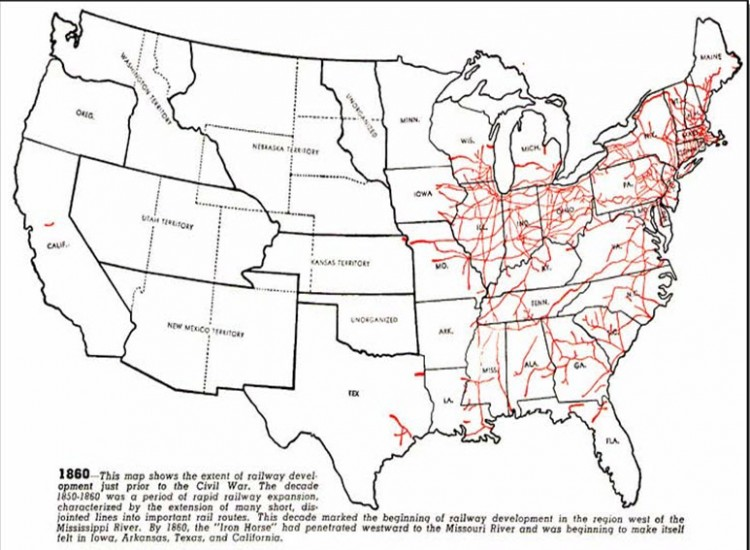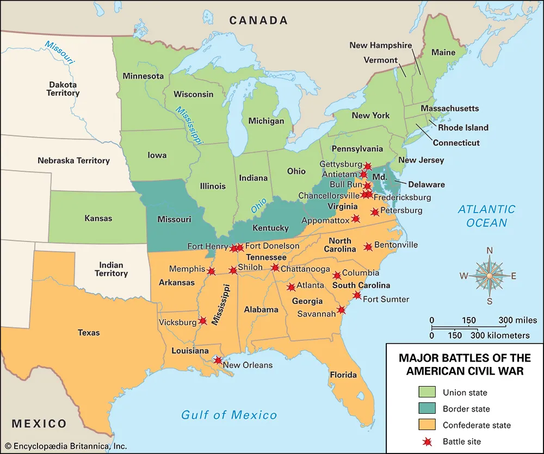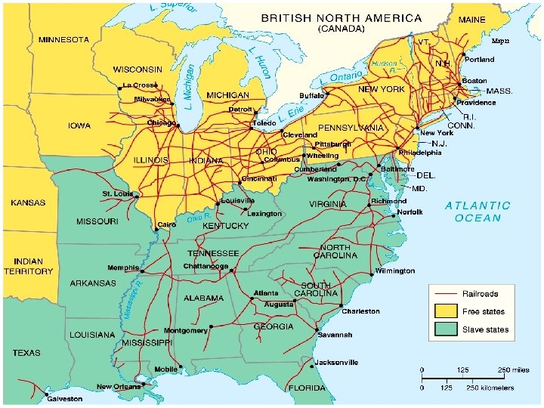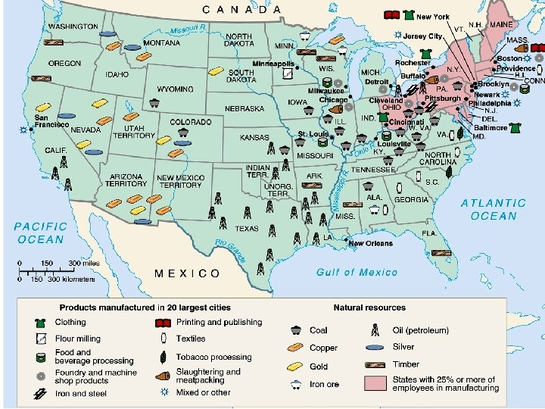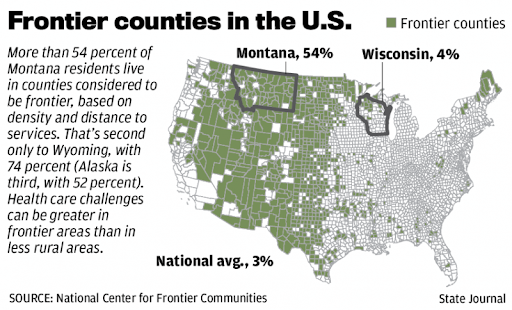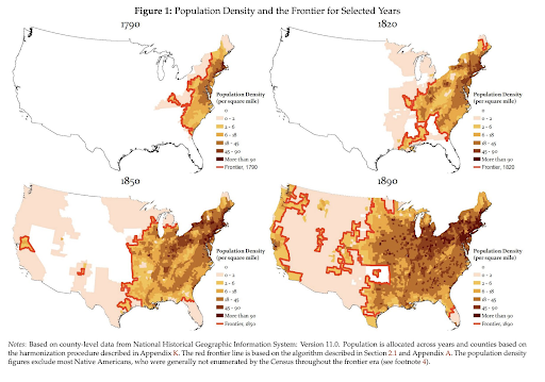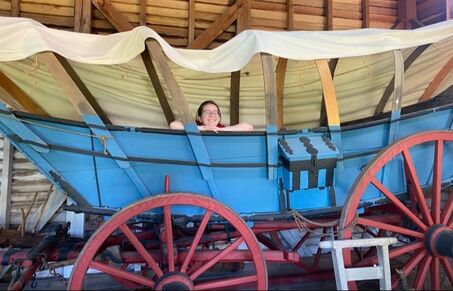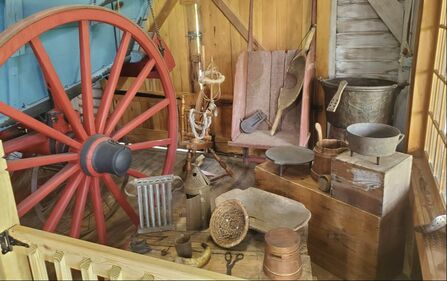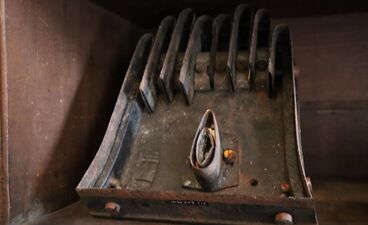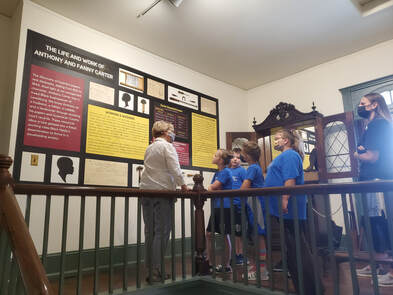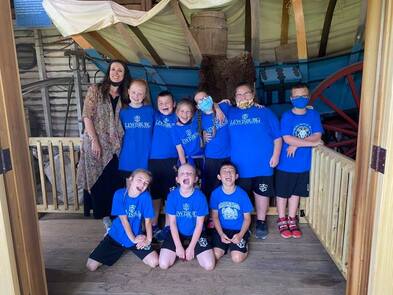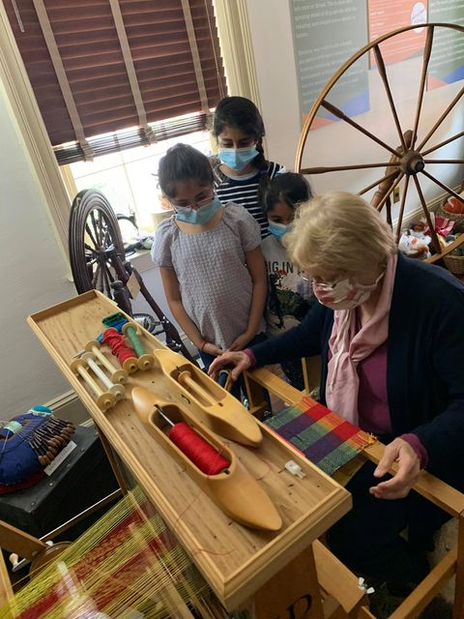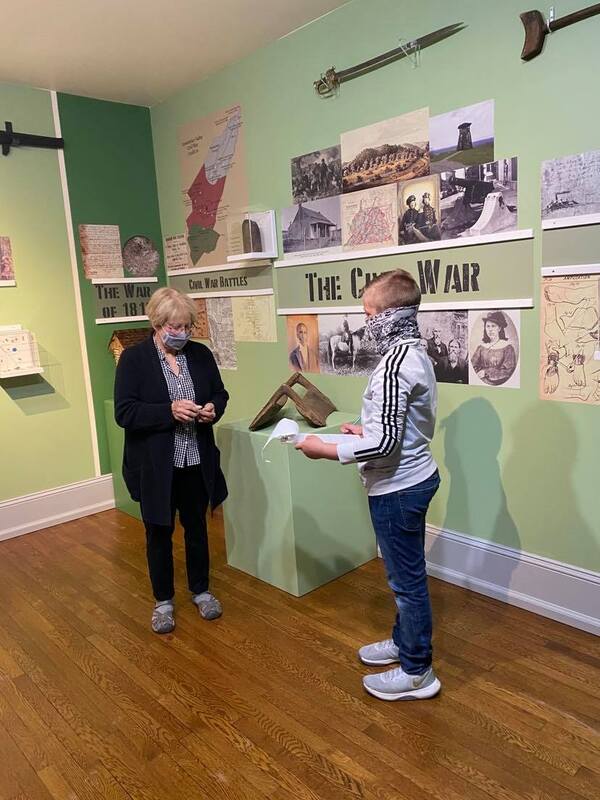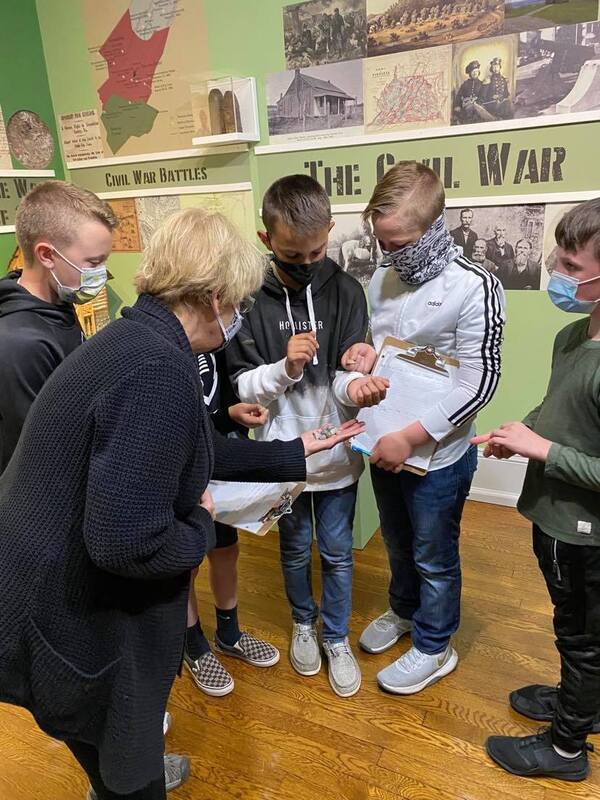Learn about the rich history of the Greenbrier Valley by attending one of our on-site educational workshops, or by scheduling a program for your class or group. The Greenbrier Historical Society is dedicated to the advancement and education of students and adults throughout the Greenbrier Valley, and is pleased to continually present new and innovative programs for hands-on historical learning.
Summaries of Educational Programs - In HouseAge of Steam Civil War Studies Black History 365 From Thread to Cloth Historic Cemeteries Walk Pioneer Days In Greenbrier County What's in the Cupboard? West Virginia Games & Toys Native American Heritage |
|
Age of Steam
This program covers the role of the railroad in Greenbrier County by examining how it influenced nature, industry, and everyday life. It utilizes the model railroad to discover the innovations and challenges that occurred during the transition from horse-power to steam-power. Students are encouraged to think critically about what they are seeing and how such a major innovation changed the lives of the people of Greenbrier County. Additional world events are also discussed to bring a greater context to the time period portrayed by the model.
In-Class ActivitiesRoutes of Travel
Compare modern and historical maps to see which routes line up, and where the oldest used travel paths are. Which paths remained in use? Did anything go away? What else has changed? (Think about rails to trails, highways bypasses, etc.) Then, using colored pencils or GIS software, have the students create a color-coded combined map showing the different routes. Think about important events that would have triggered major changes in the type or direction of routes. Bridging the Mountains All aboard the STEAM train! West Virginia has a lot of mountains, valleys, and rivers. Have students test their engineering skills by building a train bridge at least 1 foot long. Whoever builds the strongest bridge (the one that holds the most weight without collapsing) wins! You may want to have students research bridges for ideas. |
My Railroad Journey
This is a journaling assignment. Have students imagine they are traveling by passenger car during the Age of Steam. Where are they going? What do they see? Where do they sleep? What is the train like? They may wish to use a map to plan their route. Included is a railroad map of West Virginia’s old passenger lines. Other maps can be found online if they wish to travel beyond the state!
This is a journaling assignment. Have students imagine they are traveling by passenger car during the Age of Steam. Where are they going? What do they see? Where do they sleep? What is the train like? They may wish to use a map to plan their route. Included is a railroad map of West Virginia’s old passenger lines. Other maps can be found online if they wish to travel beyond the state!
|
SS.K.16: Investigate the past and explore the differences in other people, times and cultures through stories of people, heroes, pictures, songs, holidays, customs, traditions, and legends.
SS.K.22: Compare and contrast the past and present lifestyles of West Virginians. SS.1.11: Describe how climate and location affect the way people live, work, & play.
SS.1.12: Give examples of natural resources and their uses. SS.1.18: Use primary source documents and oral accounts to investigate the way communities changed throughout history. SS.1.23: Investigate the common occupations of people of West Virginia. SS.2.11: Summarize how climate, location and physical surroundings have caused changes in the community and state over time.
SS.2.12: Classify examples of natural resources and how people use them. SS.3.9: Sequence the path of a product from raw material to the final product.
SS.3.10: Use charts, maps and other data sources to correlate occupations with the economy and the available resources of a region. SS.3.24: Identify the four geographical regions of West Virginia, the major communities, and the natural resources found within each region. SS.4.9: Document the effects of and explain how people adapted to geographic features (e.g., climate, mountains, bodies of water, etc.) on the following
SS.4.12: Analyze the impact of West Virginia’s geography on transportation, settlement, jobs, clothing, food, shelter, services and interaction with others outside the state. SS.4.16: Demonstrate an understanding of the causes and effects of Westward Expansion.
SS.4.18: Compare & contrast West Virginia’s population, products, resources, & transportation from the 18th century through modern day. |
SS.5.7: Explain the concept of supply and demand in specific historic and current economic situation in the United States.
SS.5.22: Demonstrate an understanding of the advances in transportation and its effect on Westward Expansion.
SS.7.10: Research and investigate how natural resources impact the economy.
SS.7.15: Evaluate the effects of physical geography and the changing nature of earth’s surface on transportation, culture, economic activities, and urban areas. SS.8.8: Analyze the impact of absentee ownership, renewable and non-renewable natural resources, labor unionization and the development of infrastructure on the economy of West Virginia (e.g., railroad, major highways, internet and cellular service)
SS.8.9: Research and cite industries that are vital to the economy of the four regions of West Virginia both past and present, and categorize the related occupations. SS.8.11: Compare and contrast the effects of technologies/industrial advances as they relate to economy vs. environment and their effects on the demographic profile of West Virginia. SS.8.17: Analyze the geographic features that led to development of agriculture, coal, glass, chemical, metallurgic and tourism industries in West Virginia. SS.8.23: Demonstrate an understanding of major social, political and economic developments that took place in West Virginia during the second half of the nineteenth century.
|
Civil War Studies
A variety of different programs exploring different aspects of the Civil War through artifacts.
In-Class Activities
Influence of Industrialization
Look at maps of industry vs agriculture in the US in 1850s and 60s. Railroad track maps also help show the difference. Have the students think about these implications as they make their own combined map of this information. How does this illustrate the economies of the different regions? How does this affect the microcosm of West Virginia and Virginia? How did industrialization impact the outcome of the war? Do you notice a connection between battle sites and railroad lines? Why do you think this is?
Look at maps of industry vs agriculture in the US in 1850s and 60s. Railroad track maps also help show the difference. Have the students think about these implications as they make their own combined map of this information. How does this illustrate the economies of the different regions? How does this affect the microcosm of West Virginia and Virginia? How did industrialization impact the outcome of the war? Do you notice a connection between battle sites and railroad lines? Why do you think this is?
Letters from Soldiers
Students will read the included primary source documents. These are letters written by Civil War soldiers. They will then write a reply to the soldier in the letter they have been given. They can write as if they are his family member, or they can write letters as themselves to the soldier.
Letters found here, with transcripts:
Ferdinand Sophus Winslow letters, February-September 1862
Henry Clay Russell's Civil War letters, 1861-1865
James B. Weaver letters, 1860-1864
More Primary Source documents on this website!
Students will read the included primary source documents. These are letters written by Civil War soldiers. They will then write a reply to the soldier in the letter they have been given. They can write as if they are his family member, or they can write letters as themselves to the soldier.
Letters found here, with transcripts:
Ferdinand Sophus Winslow letters, February-September 1862
Henry Clay Russell's Civil War letters, 1861-1865
James B. Weaver letters, 1860-1864
More Primary Source documents on this website!
|
SS.1.18: Use primary source documents and oral accounts to investigate the way communities changed throughout history.
|
SS.5.25: Reconstruct the economic, social and political history of West Virginia through the use of primary documents.
|
SS.3.4: Examine historical conflicts and their resolutions.
SS.5.20: Demonstrate an understanding of the industrial North and the agricultural South before, during and after the Civil War.
- Research the roles and accomplishments of the leaders of the reform movements before and during the Civil War.
- Explain how specific events and issues lead to the Civil War.
- Summarize key battles, strategies and turning points of the Civil War.
- Compare the roles and accomplishments of historic figures of the Civil War.
- Explain the impact of the Civil War’s physical destruction on the nation and the people.
SS.8.22: Demonstrate an understanding of the American Civil War including its causes, effects and the major events that led to West Virginia statehood.
|
Knap Sack
A hands-on, object-based look at the contents of a Civil War soldier’s knap sack. Students learn what was carried and why, and how the challenge of carrying all your tools on your person limited what could be brought along. The program will engage students’ creativity as they are asked to figure out what each tool is and was used for. This program can be done in house or in schools. |
Medicine Trunk
A hands-on, object-based look at the role of Civil War medicine. Students will see and touch musket balls and cannon balls, and learn about the deadly fates of many soldiers. They will also learn about some of the medical innovations that came out of the Civil War. This program can be done in house or in schools. Currently on display in the war room as a hands-on element of the exhibition. |
At GHS we are striving to teach everyone about our diverse regional history. This program will be a resource that explores and celebrates Black history all year long. Our Echoes of Slavery in Greenbrier County exhibit is a carefully researched timeline of Greenbrier Valley history that brings new insights to encourage critical thought in students beyond the standard textbooks. The exhibit is available online where teachers and students can engage in the content. The Life and Work of Anthony Carter exhibit recognizes Anthony and Fanny Carter. Emancipated in July of 1837, the newly freed Black family was determined to thrive in the slave-holding society of Lewisburg. This exhibit utilizes daybooks from Anthony’s business as well as Greenbrier County Court documents to peek inside the lives of this family. The exhibit is available online where teachers and students can engage in the business papers, objects, and court documents. Our Black History Map of the Greenbrier Valley will highlight Black-owned businesses, churches, cemeteries, and other historic locations.
|
SS.K.22: Compare and contrast the past and present lifestyles of West Virginians.
SS.1.18: Use primary source documents and oral accounts to investigate the way communities changed throughout history.
SS.1.20: Explore the history of the community and give examples of locally significant sites and people. SS.2.21: Compare and contrast past and present lifestyle of West Virginians.
SS.3.4: Examine historical conflicts and their resolutions.
SS.4.15: Trace the beginnings of America as a new nation and the establishment of a new government.
|
SS.5.21: Examine the economic, pollical and social developments during Reconstruction.
SS.6.23: Identify the key figures, events and philosophies of the US Civil Rights Movement.
SS.7.3: Compare and contrast the roles, rights and responsibilities of free men, women, children, slaves and foreigners across time and in various civilizations.
SS.8.23: Demonstrate an understanding of major social, political and economic developments that took place in West Virginia during the second half of the 19th century.
SS.8.24: Demonstrate understanding of West Virginia’s development in the early 20th c. SS.8.25: Demonstrate understanding of West Virginia’s development in the mid-20th c. SS.8.26: Demonstrate understanding of West Virginia in the modern era. |
From Thread to Cloth |
This program involves a hands-on look at cloth, and the techniques, tools, and materials used to produce it in early America. It also involves some discussion of gender “norms” and the societal expectations for men and women at the time, and could incorporate a discussion of slavery if students are of appropriate age to know about that already. Students will then learn to and practice weaving cloth to take home. This program can be done in house or in schools, but in house will allow a better look at the tools of the trade.
|
SS.K.22: Compare and contrast the past and present lifestyles of West Virginians.
SS.1.25: Describe the cultural life of West Virginia as reflected in games, toys and various art forms.
SS.2.11: Summarize how climate, location and physical surroundings have caused changes in the community and state over time.
SS.2.21: Compare and contrast past and present lifestyle of West Virginians. VA.K-2.7: Explore, examine, and discuss how art has existed through time and is affected by its creator, culture, style, and/or time periods.
VA.K-2.8: Create art that reflects the style of various cultures from different time periods. VA.K-2.9: Explore, examine, and discuss how person and others’ works of art represent feelings, reflect experiences, create meaning, and/or have a function. VA.K-2.10: Explore, examine, and discuss how ideas, experiences, and stories can be expressed through multiple arts, disciplines, and other subjects. SS.3.3: Investigate significant cultural contributions of various groups creating our multicultural society.
SS.4.7: Research and examine how slavery and indentured servitude influenced the early economy of the United States by constructing graphics (charts, graphs, tables, grids, etc.) displaying the effects of having slaves and indentured servants.
SS.4.9: Document the effects of and explain how people adapted to geographic features (e.g., climate, mountains, bodies of water, etc.) on the following:
|
SS.5.24: Analyze the people and factors that lead to Industrialization in the late 19th century United States.
VA.3-5.7: Compare and contrast, analyze, and aske and answer questions about how art has existed through time and is affected by its creator, culture, style, and/or time period.
VA.3-5.8: Create art that reflects the style of various cultures from different time periods as well as from current events. VA.3-5.9: Compare and contrast, analyze, and ask and answer questions about how personal and others’ works of art represent feelings, reflect experiences, create meaning, and/or have a function. VA.3-5.10: Explore, compare and contrast, and analyze how ideas, experiences, and stories can be expressed through multiple arts, disciplines, and other subjects. SS.7.3: Compare and contrast the roles, rights and responsibilities of free men, women, children, slaves and foreigners across time and in various civilizations.
VA.6-8.7: Investigate, interpret, and draw in-depth conclusions about how art has existed through time and is affected by its creator, culture, style, and/or time period.
VA.6-8.8: Create art collaboratively that reflects changing times, traditions, resources, and cultural resources. VA.6-8.9: Investigate, interpret, and draw in-depth conclusions of the ways personal and others’ works of art represent feelings, reflect experiences, create meaning, and/or have a function. VA.6-8.10: Investigate, interpret, and draw in-depth conclusions about how ideas, experiences, and stories can be expressed through multiple arts, disciplines, and other subjects. |
Historic Cemeteries Walk
These programs cover walks of the three historic cemeteries near the museum. These are guided tours that share the history of these plots, and some stories of the people for whom they are the final resting place. The following cemeteries are available for tours: Confederate Cemetery, Dick Pointer Cemetery, and Old Stone Cemetery.
|
SS.K.16: Investigate the past & explore the differences in other people, times, & cultures through stories of people, heroes, pictures, songs, holidays, customs, traditions, & legends.
SS.K.21: Recognize local community names. SS.1.20: Explore the history of the community and give examples of locally significant sites and people.
SS.2.16: Explore the impact historic figures have had upon our society.
|
SS.5.20: Demonstrate an understanding of the industrial North and the agricultural South before, during, and after the Civil War.
SS.8.22: Demonstrate an understanding of the American Civil War including its causes, effects and the major events that led to West Virginia statehood.
|
Pioneer Days in Greenbrier County
This program has several elements, but focuses on the Coffman wagon as a centerpiece for understanding how people traveled to the frontier. It discusses the history of the wagon and what life was like for people settling out here. It involves hands-on examination of artifacts and askes the students to think about how people survived in a very isolated place. This could be done all together split into smaller activities.
In-Class Activities
What is a frontier?
The frontier has changed over time as settlements have moved across the world and the country. Define the frontier in this context as the place where “settlement” ends and “wilderness” begins. Have students create a poster, diorama, poem, encyclopedia page, or other project explaining the concept of a frontier.
The Moving Frontier
This website shows settlements over time: https://www.census.gov/dataviz/visualizations/001/. Through this we can determine the frontier over the years. Explore it as a class or allow the students to explore it on their own. What year was WV the frontier? When so you think the USA stopped having a frontier? Or do you believe there is still a frontier in the USA? Hint, here is another resource:
The frontier has changed over time as settlements have moved across the world and the country. Define the frontier in this context as the place where “settlement” ends and “wilderness” begins. Have students create a poster, diorama, poem, encyclopedia page, or other project explaining the concept of a frontier.
The Moving Frontier
This website shows settlements over time: https://www.census.gov/dataviz/visualizations/001/. Through this we can determine the frontier over the years. Explore it as a class or allow the students to explore it on their own. What year was WV the frontier? When so you think the USA stopped having a frontier? Or do you believe there is still a frontier in the USA? Hint, here is another resource:
Westward Ho!
Imagine you are a pioneer traveling west. Make a list of all the things you will need to bring. Will they fit in your wagon? Is there anything you should leave behind instead? Remember, your wagon is only 10 x 4 feet!
A Letter from the Frontier
Imagine you have just settled on the frontier in the Greenbrier Valley. Write a letter home to your friends or family telling them about your new life here. What do you do each day? What challenges do you face? What do you like about your new home?
Imagine you are a pioneer traveling west. Make a list of all the things you will need to bring. Will they fit in your wagon? Is there anything you should leave behind instead? Remember, your wagon is only 10 x 4 feet!
A Letter from the Frontier
Imagine you have just settled on the frontier in the Greenbrier Valley. Write a letter home to your friends or family telling them about your new life here. What do you do each day? What challenges do you face? What do you like about your new home?
|
SS.K.22: Compare and contrast the past and present lifestyles of West Virginians.
SS.2.11: Summarize how climate, location and physical surroundings have caused changes in the community and state over time.
SS.2.21: Compare and contrast past and present lifestyle of West Virginians. SS.3.21: Examine the settlement of North America by Native Americans.
SS.4.9: Document the effects of and explain how people adapted to geographic features (e.g., climate, mountains, bodies of water, etc.) on the following:
SS.4.12: Analyze the impact of West Virginia’s geography on transportation, settlement, jobs, clothing, food, shelter, services and interaction with others outside the state. SS.4.16: Demonstrate an understanding of the causes and effects of Westward Expansion.
SS.4.18: Compare and contrast West Virginia’s population, products, resources and transportation from the 18th century through modern day. |
SS.5.14: Explain how the aspects of the terrain (e.g., principal mountain ranges, rivers, vegetation and climate of the region, etc.) affected westward travel and settlement.
SS.7.3: Compare and contrast the roles, rights and responsibilities of free men, women, children, slaves and foreigners across time and in various civilizations.
SS.7.15: Evaluate the effects of physical geography and the changing nature of earth’s surface on transportation, culture, economic activities and urban areas. SS.8.20: Demonstrate an understanding of the settlement of western Virginia and the United States by Native Americans and Europeans.
|
|
Conflict on the Greenbrier Frontier
This mini-program discusses life on the isolated Appalachian frontier in early America. It also looks at two samples of writing from the early days of white settlement in Greenbrier County and asks students to think about what they are saying. What Did People Wear?
This program uses the STEAM room to discuss clothing and the production of cloth on the frontier. It emphasizes the need for self-sufficiency that early settles had in moving so far from suppliers. Students will have a hands-on experience with the spinning wheel and loom. |
Pioneer Trunk
This program uses artifacts to give students an understanding of life for pioneers traveling through the mountains into what is, today, West Virginia. They will practice empathy by imagining themselves in the position of a pioneer moving to the frontier and improve their understanding of what these travelers chose to take with them through the artifacts in the trunk. Wagon House Tour
This program provides a detailed tour of the wagon house, the history of the Coffman wagon, and a look at the other tools and artifacts found in the building. It incorporates the themes of technology, innovation, and transportation. |
What’s in the Cupboard?
This program uses artifacts of every day tools to enhance student understanding of the daily lives of people who lived in the past. They will compare and contrast the types of household items we have today with those commonly found long ago.
|
SS.K.22: Compare and contrast the past and present lifestyles of West Virginians.
SS.1.11: Describe how climate and location affect the way people live, work and play.
SS.1.18: Use primary source documents and oral accounts to investigate the way communities changed throughout history. SS.2.5: Investigate various occupations and career opportunities and how they have changed within the state and nation.
SS.2.21: Compare and contrast past and present lifestyle of West Virginians. |
SS.4.17: Analyze the impact of West Virginia’s geography on transportation, settlement, jobs, clothing, food, shelter, services and interaction with others outside the state.
SS.5.24: Analyze the people and factors that lead to Industrialization in the late 19th century United States.
SS.7.3: Compare and contrast the roles, rights and responsibilities of free men, women, children, slaves and foreigners across time and in various civilizations.
|
West Virginia Games and Toys
This program uses children’s toys from different historic eras to examine the influence of factories, trade, and gender roles on the types of toys kids played with. Students will enhance their critical thinking skills by identifying the hand-made vs. factory produced items. They will also compare and contrast the toys in the program with modern toys.
|
SS.K.22: Compare and contrast the past and present lifestyles of West Virginians.
SS.1.11: Describe how climate and location affect the way people live, work and play.
SS.1.25: Describe the cultural life of West Virginia as reflected in games, toys and various art forms. SS.2.21: Compare and contrast past and present lifestyle of West Virginians.
SS.4.17: Analyze the impact of West Virginia’s geography on transportation, settlement, jobs, clothing, food, shelter, services and interaction with others outside the state.
SS.4.18: Compare and contrast West Virginia’s population, products, resources and transportation from the 18th century through modern day. |
SS.5.24: Analyze the people and factors that lead to Industrialization in the late 19th century United States.
SS.7.3: Compare and contrast the roles, rights and responsibilities of free men, women, children, slaves and foreigners across time and in various civilizations.
|
Native American Heritage Day |
The land of the Greenbrier Valley was home to Native people for thousands of years before the settlement of white colonizers. We acknowledge the Native communities who once used the land and resources of the Greenbrier Valley.
Helpful History Resources
West Virginia History On View: Photographs
West Virginia Vital Records: WV county Vital Records
Meadow Bluff Meanderings: Communities and families of the Meadow Bluff District of Greenbrier County
Friends of Droop Mountain and Hillsboro, WV
Greenbrier County and West Virginia History
History of Caldwell, WV
Monroe County Historical Society
Pocahontas County Historical Society
West Virginia Vital Records: WV county Vital Records
Meadow Bluff Meanderings: Communities and families of the Meadow Bluff District of Greenbrier County
Friends of Droop Mountain and Hillsboro, WV
Greenbrier County and West Virginia History
History of Caldwell, WV
Monroe County Historical Society
Pocahontas County Historical Society
The Greenbrier Historical Society offers links to a variety of sites maintained by third parties. In accessing these sites, you are leaving the Greenbrier Historical Society's website. These links are offered only for use at your own discretion.
